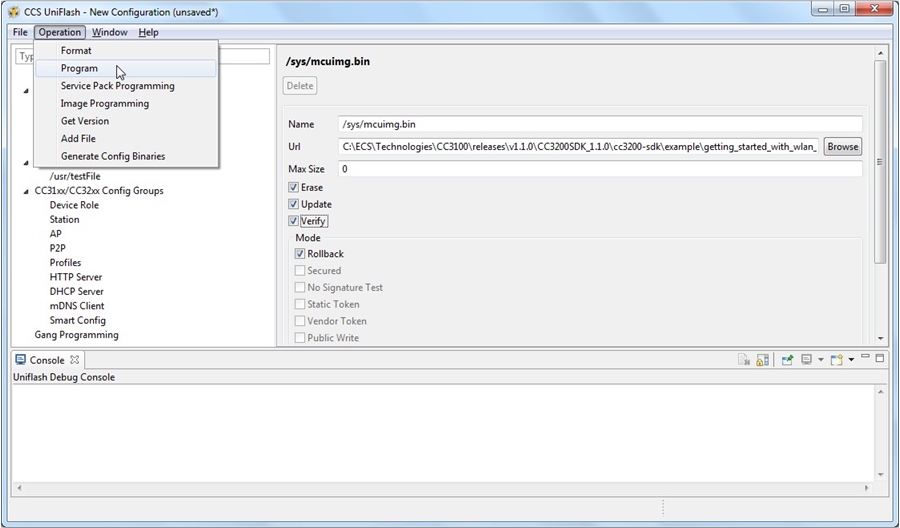SWRU558 June 2020 CC3100 , CC3100MOD , CC3200 , CC3200MOD
-
SimpleLink Wi-Fi CC3100, CC3200 UniFlash
- Trademarks
- 1 Introduction
- 2 Installation
- 3 Prerequisites
- 4 Uniflash Block Diagram
- 5 Session Support
- 6 Secured File System Support
- 7 GUI Interface
- 8 CC3200 Support
- 9 Command Line Support
- 10 Configuration File Support
- 11 Image Creation and Programming
- 12 Troubleshoot/Debugging
- 13 Limitations
- 14 References
- A UART Connection
8.2 Configuration and Programing
Current available non-secured CC3200: User can only create a mcuimg file without any security and it will work.
Future secured CC3200:
- User can create a mcuimg file as non-secured and it will work
- User can create a mcuimg file as secured and it will work
Another important parameter that requires a special care is the maximum size of the MCU image. On CC3200R devices, RAM size is 256KB but only 240KB is available (16KB is for system usage). On CC3200Z devices, only 176KB is available.
An example configuration of MCU image is listed below:
- Name: /sys/mcuimg.bin (not configurable by the user).
- MaxSize: 0 to indicate the original file size. Note that for production devices, the maximum possible size is 245760 bytes (240KB). The reason is that the RAM size is 256KB and 16KB are required by the system.
- Mode: nothing is checked, indicating a non-secured image. Rollback is mandatory in order to support OTA (non-configurable by the user).
- Signature: greyed out
- Certificate: greyed out
- Url: full path where the file is located
- Erase checkbox: checked for erasing
- Update checkbox: checked for flashing
- Verify checkbox: checked for flashing verification
 Figure 14. mcu_flashing
Figure 14. mcu_flashing